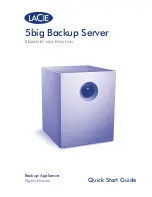
SV9100 Networking Manual
7-1
Chapter 7
UNIVERGE
®
SV9100
H.323 Trunking
S
ECTION
1
I
NTRODUCTION
H.323 is an International Telecommunication Union (ITU) standard for Packet Based
Multimedia Communication Systems. The UNIVERGE SV9100 can use H.323 to
connect to another UNIVERGE SV9100 system or a third party product.
The feature set is limited. When using H.323, it is not possible to use the advanced
networking features. If these features are required, use IP K-CCIS.
The UNIVERGE SV9100 Voice over IP Trunk Daughter Board H.323 package sends
the real-time voice over the corporate LAN or WAN. The voice from the telephone is
digitized and then put into frames to be sent over a network using Internet Protocol.
The UNIVERGE SV9100 Voice over IP Trunk – H.323 daughter board package
allows communication using standard H.323 (Normal and Fast Start) Protocol and
allows connectivity to any H.323 standards compliant voice gateway and gatekeeper.
This VoIP Trunk daughter board also allows Registration and Authentication Server
(RAS) support to register with an RAS Server and use Gatekeeper for dynamic call
routing.
The GPZ-IPLE daughter board – H.323 is an optional interface that can provide IP
trunks and Tie Lines. It can operate in the following modes:
COI
DID
TLI
Depending on the requirements and resource allocation in the LAN/WAN/Internet,
the GPZ-IPLE – H.323 can be configured to use any of the following voice
compressions:
G.729 Low bandwidth requirement used on most Wide Area Network links.
G.711 High bandwidth requirement usually used on Local Area Networks.
G.722 This CODEC is useful in fixed network, Voice over IP applications, where the
required bandwidth is typically not prohibitive.
G.723 This CODEC is a ITU-T standard wideband speech CODEC. This is an
extension of Recommendation G.721 adaptive differential pulse code modulation to
24 and 40Kbps for digital circuit multiplication equipment application.
Summary of Contents for Univerge SV9100
Page 1: ...Networking Manual A50 035910 004 AU Issue 2 0...
Page 20: ...xviii Table of Contents Issue 2 0...
Page 26: ...xxiv List of Figures Issue 2 0...
Page 33: ...Book 1 SV9100 K CCIS...
Page 49: ...Issue 2 0 1 16 General Information US Only Figure 1 15 Circuit Identification Codes CIC...
Page 53: ...Issue 2 0 1 20 General Information US Only...
Page 61: ...Issue 2 0 2 8 Hardware Installation US Only...
Page 195: ...Issue 2 0 4 116 Features and Specifications...
Page 242: ...Book 2 SV9100 IP Networking...
Page 256: ...Issue 2 0 2 12 IP Networking...
Page 312: ...Issue 2 0 4 48 Programming...
Page 376: ...Issue 2 0 6 30 SIP Trunking...
Page 391: ...Issue 2 0 7 14 H 323 Trunking...
Page 467: ...Issue 2 0 8 76 IP Multiline Station SIP...
Page 551: ...Issue 2 0 10 64 SV9100 NetLink Conditions None Feature Cross Reference None...
Page 567: ...Issue 2 0 10 80 SV9100 NetLink Conditions None Feature Cross Reference None...
Page 579: ...Issue 2 0 11 6 NAPT...
Page 580: ...Issue 2 0 SV9100 Networking Manual 11 7...
Page 581: ...Issue 2 0 11 8 NAPT...
Page 582: ...Issue 2 0 SV9100 Networking Manual 11 9...
Page 583: ...Issue 2 0 11 10 NAPT...
Page 584: ...Issue 2 0 SV9100 Networking Manual 11 11...
Page 595: ...Issue 2 0 12 4 All DSP Busy Indication...
Page 671: ...Issue 2 0 13 76 AspireNet Conditions None Feature Cross Reference None...
Page 685: ...Issue 2 0 13 90 AspireNet Department Calling Flexible System Numbering Intercom...
Page 707: ...Issue 2 0 13 112 AspireNet Default Trunk Port Number Name 1 Line 001 2 Line 002 400 Line 400...
Page 713: ...Issue 2 0 13 118 AspireNet Department Calling...
Page 765: ...Issue 2 0 13 170 AspireNet...
















































